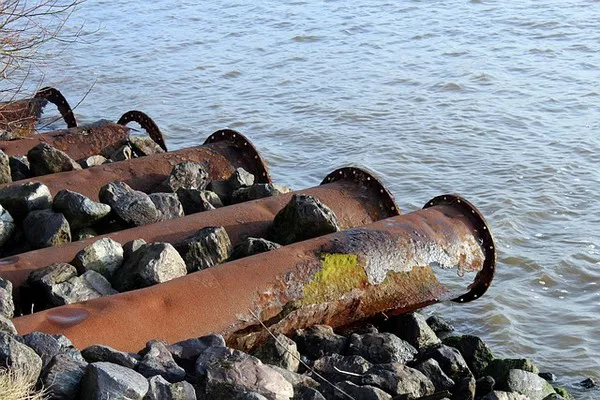An anoxic tank plays a crucial role in the advanced stages of wastewater treatment. This article delves into the specifics of an anoxic tank in wastewater management, its function, and its significance in the overall process of wastewater management.
Understanding Wastewater Treatment
Before discussing the specifics of anoxic tanks, it is essential to understand the general process of wastewater treatment. Wastewater treatment is a multi-step process designed to remove contaminants from water to make it safe for discharge into the environment or for reuse. The primary stages of wastewater treatment are:
Preliminary Treatment: Removes large debris and solids.
Primary Treatment: Settles out solid particles through sedimentation.
Secondary Treatment: Biological processes remove dissolved organic matter.
Tertiary Treatment: Further purification to remove remaining contaminants, often through chemical or physical processes.
The Role of Biological Treatment
Biological treatment is a critical phase in wastewater management, primarily falling under secondary treatment. This phase utilizes microorganisms to degrade organic matter. Biological treatment processes are classified into aerobic (requiring oxygen) and anaerobic (without oxygen) treatments. Anoxic treatment, while related, occurs in the absence of free oxygen but requires the presence of chemically bound oxygen, such as nitrate (NO3-).
Anoxic Conditions Explained
An anoxic environment is one where oxygen is absent, but nitrate or nitrite can serve as an electron acceptor. These conditions are essential for specific biological processes, particularly denitrification, which is the reduction of nitrates or nitrites to nitrogen gas (N2). Denitrification is a critical component in the nitrogen cycle, helping to prevent excessive nitrogen compounds in treated water, which can lead to eutrophication in receiving water bodies.
Structure and Design of an Anoxic Tank
An anoxic tank is designed to create and maintain an environment devoid of free oxygen but rich in nitrates. The tank typically has the following features:
Mixers: Unlike aerobic tanks, anoxic tanks do not use aerators. Instead, they use mixers to keep the contents homogeneous and to ensure that microorganisms have adequate contact with the wastewater and nitrates.
Baffles: These are often used to create a serpentine flow, increasing the time the wastewater spends in the anoxic zone.
Sensors: Advanced tanks may include sensors to monitor nitrate levels, pH, and other critical parameters to optimize the denitrification process.
Biological Processes in Anoxic Tanks
The primary biological process occurring in an anoxic tank is denitrification. This multi-step process involves various bacterial species, typically facultative anaerobes, which can switch between aerobic and anaerobic respiration based on the availability of oxygen and nitrates. The stages of denitrification include:
- Nitrate Reduction: Nitrate (NO3-) is reduced to nitrite (NO2-).
- Nitrite Reduction: Nitrite is further reduced to nitric oxide (NO).
- Nitric Oxide Reduction: Nitric oxide is reduced to nitrous oxide (N2O).
- Nitrous Oxide Reduction: Finally, nitrous oxide is reduced to nitrogen gas (N2).
The nitrogen gas produced is then released into the atmosphere, effectively removing nitrogen from the wastewater.
Importance of Anoxic Tanks in Wastewater Treatment
Anoxic tanks are vital for several reasons:
Nitrogen Removal: They play a crucial role in removing nitrogen compounds, which, if discharged into natural water bodies, can cause nutrient pollution and eutrophication.
Compliance with Regulations: Many regions have strict regulations on the nitrogen content of treated effluent. Anoxic tanks help treatment facilities meet these regulatory requirements.
Enhanced Treatment Efficiency: When integrated with aerobic and anaerobic processes, anoxic tanks enhance the overall efficiency of the wastewater treatment plant.
Integration with Other Treatment Processes
Anoxic tanks are typically part of a larger treatment train and are often integrated with aerobic and anaerobic processes. Common configurations include:
Modified Ludzack-Ettinger (MLE) Process: This is a common layout where an anoxic tank is followed by an aerobic tank. In this setup, nitrification (conversion of ammonia to nitrate) occurs in the aerobic tank, and the nitrate-rich effluent is then sent to the anoxic tank for denitrification.
Sequencing Batch Reactors (SBRs): SBRs can include anoxic phases in their cycles, allowing for the alternating conditions required for nitrification and denitrification within the same reactor.
Integrated Fixed-film Activated Sludge (IFAS): IFAS systems incorporate media within the tanks to support biofilm growth, which can include anoxic zones to promote denitrification.
Challenges and Considerations
While anoxic tanks are highly effective, they come with challenges and considerations:
Carbon Source: Denitrification requires a carbon source. In cases where the wastewater lacks sufficient organic carbon, external sources like methanol or acetate may need to be added, increasing operational costs.
Control and Monitoring: Maintaining optimal anoxic conditions requires careful monitoring and control of parameters such as nitrate levels, carbon source, and mixing intensity.
Integration: Proper integration with other treatment processes is crucial. Poor design or operation can lead to suboptimal performance and potential issues like incomplete denitrification or excessive nitrite accumulation.
Innovations and Future Trends
Advancements in technology and research are continually improving the efficiency and functionality of anoxic tanks. Some notable trends include:
Automation and Control Systems: The use of advanced sensors and control systems to optimize the denitrification process in real-time.
Bioaugmentation: Introducing specialized microbial cultures to enhance the denitrification process, particularly in challenging wastewater conditions.
Hybrid Systems: Combining anoxic tanks with emerging technologies such as membrane bioreactors (MBRs) or advanced oxidation processes (AOPs) to achieve higher treatment efficiencies and better effluent quality.
See Also HOW MUCH DOES A WASTEWATER TREATMENT PLANT COST TO BUILD
Conclusion
Anoxic tanks are indispensable components of modern wastewater treatment plants, playing a critical role in nitrogen removal through the process of denitrification. By understanding the design, function, and integration of these tanks, treatment facilities can effectively manage nitrogen levels, comply with environmental regulations, and protect aquatic ecosystems. As technology advances, the efficiency and capabilities of anoxic tanks are likely to improve, further enhancing the sustainability and effectiveness of wastewater treatment processes.

